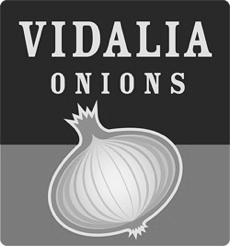Hey there! I’ve been growing and cooking with onions for years, and lemme tell you – these versatile veggies have quite an interesting seasonal cycle. While you can grab onions at the store year-round, knowing when different types are at their peak can make a huge difference in your cooking. Let’s dive into everything you need to know about onion seasons!
The Quick Answer
Onions are available throughout the year, but their peak seasons vary:
- Spring/Summer (Fresh) Onions: March through August
- Fall/Winter (Storage) Onions: August through May
Different Types of Seasonal Onions
Spring/Summer Fresh Onions
These babies are what I like to call the “tender ones.” Here’s what makes them special
- Available: March through August
- Characteristics:
- Thin, light-colored skin
- Higher water content
- Sweeter and milder flavor
- Perfect for fresh eating
- Shorter shelf life
- Best uses:
- Salads
- Sandwiches
- Light cooking
- Grilling
Fall/Winter Storage Onions
These are your hardy warriors! They’re what you want for those long cooking sessions:
- Available: August through May
- Characteristics:
- Thick, multiple layers of darker skin
- Lower water content
- More intense flavor
- Longer shelf life
- Best uses:
- Soups
- Stews
- Long-cooking dishes
- Savory recipes
Regional Onion Seasons
I’ve noticed different regions have their own onion timing
California Season
- Starts: Mid-April
- Begins in Brawley/El Centro
- Moves northward to Bakersfield
- Fresh crop characteristics:
- Barely cured
- Shaggy, flaky skin
- Sweeter taste
- Less pungent
Nevada and Pacific Northwest
- Peak season: Fall through winter
- Well-cured onions
- Strongest flavor
- Best storage quality
Color Varieties and Their Seasons
Here’s a breakdown of what you’ll find throughout the year
Yellow Onions (87% of production)
- Most versatile
- Available year-round
- Best for cooking
- Turn brown when cooked
Red Onions (8% of production)
- Great for fresh eating
- Perfect for grilling
- Available year-round
- Beautiful color for presentations
White Onions (5% of production)
- Traditional in Mexican cuisine
- Great for fresh uses
- Excellent in white sauces
- Golden when sautéed
Pro Tips for Buying Seasonal Onions
When I’m shopping for onions, here’s what I look for:
-
Spring/Summer (Fresh) Onions:
- Light, papery skin
- Slight give when squeezed
- Clean, fresh smell
-
Fall/Winter (Storage) Onions:
- Firm to touch
- Crispy, dry outer layers
- No soft spots
Storage Tips for Different Seasons
Ya know what’s funny? I used to throw all my onions in the fridge – big mistake! Here’s what I’ve learned:
Fresh Spring/Summer Onions
- Use within a few weeks
- Store in a cool, dry place
- Don’t stack them
- Keep away from potatoes
Storage Fall/Winter Onions
- Can last 4-6 months
- Store at 32°F with 65-70% humidity
- Good ventilation is key
- Check regularly for sprouting
Common Questions I Get Asked
Q: Why do my spring onions look different from winter ones?
A: That’s totally normal! Spring onions are fresher and less cured, so they’ll have thinner, flakier skin.
Q: Can I store all types of onions the same way?
A: Nope! Sweet onions need special treatment – wrap ’em in paper towels and pop them in the fridge.
Q: What if my onions start sprouting?
A: Use ’em quick! Sprouting onions are still safe to eat but won’t last much longer.
Remember, these are nature’s ninjas we’re talking about – they’ve got different superpowers depending on when they’re harvested! Understanding onion seasons has seriously upped my cooking game, and I bet it’ll do the same for you.
Whether you’re making a fresh summer salad or a cozy winter soup, knowing which onion to use when makes all the difference. Now get out there and start cooking with the right seasonal onions!
P.S. Don’t forget to share your favorite onion recipes in the comments below! I’d love to hear how you’re using different seasonal varieties in your kitchen.

We ship Vidalia Onions farm-to-door




